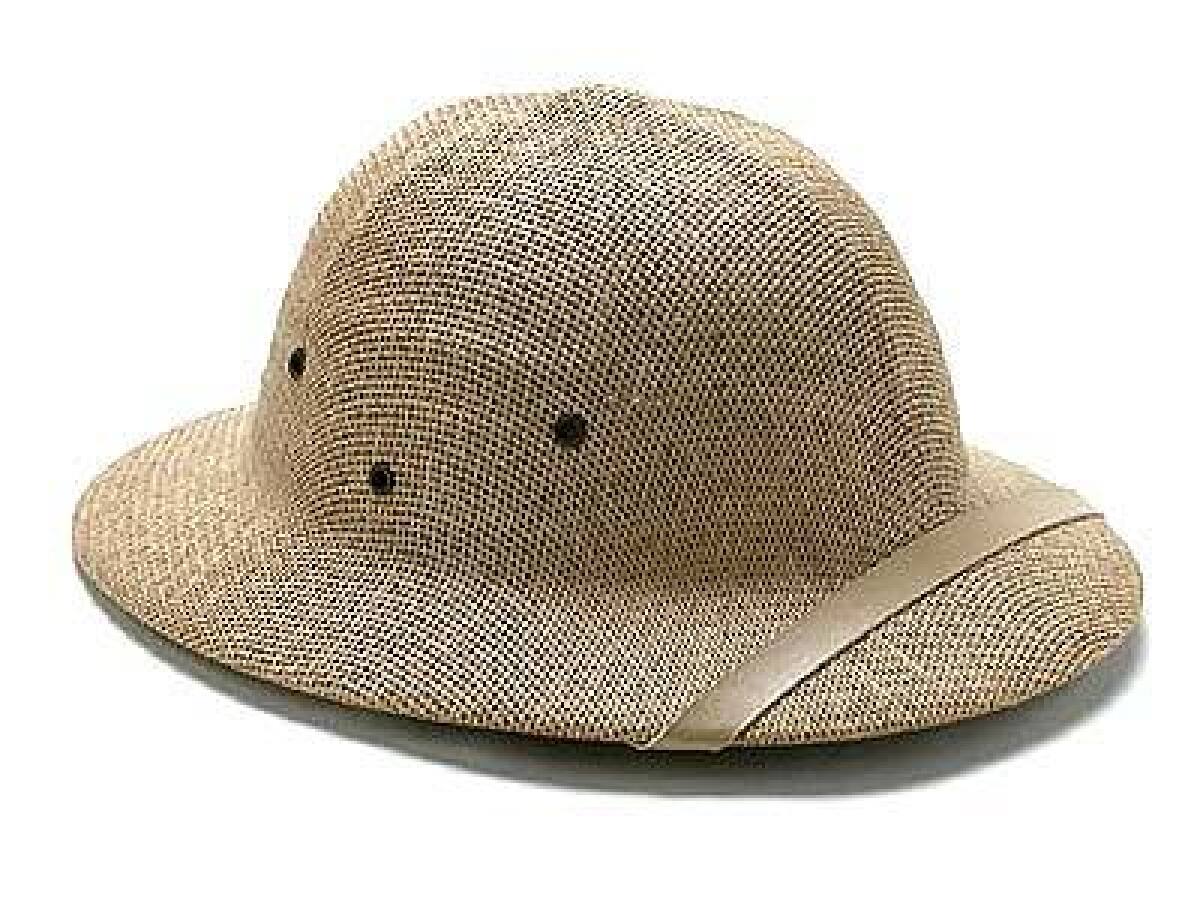Well-dressed amid the dahlias

- Share via
So what do you wear when you garden? Most likely it’s your grubbiest duds, loose clothes that offer freedom of movement but little defense. Yes, comfort is crucial, but safety is smart. From head to toe, the well-dressed gardener takes precautions before setting out.
Indeed, sartorial splendor amidst the salvias is possible. Today’s most innovative garden clothing is truly chic, in lively colors and designs for women, men and children. Much of it is high-end yet finely hewn, durable and, like premium tools, worth the investment. More traditional gear, such as simple eye protection, is reasonably priced but equally valuable.
With the busy autumn gardening season approaching, think of the real dangers — cuts, bruises, skin damage, tetanus, rashes, bug bites — that await you outdoors but can be dodged with the right gardening ensemble.
Let’s start at the top, with hats. Many gardeners spurn them. They get in the way, and “hat hair” isn’t pretty. But in sun-washed Southern California, where skin cancer is such a danger, hats are essential. Dermatologists recommend wide brims to shield vulnerable ears, nose, face and neck. Wisely, nurseries and botanical gardens stock quality chapeaus in natural materials (raffia, straw, paper, cotton and hemp) that hold their shape despite abuse. Though suitable for garden parties, these are bona fide gardeners’ hats that stay on when it’s breezy or when you bend over to snatch a weed.
Want something different? Try a Legionnaire cap with a stiff bill and long draping fabric sides and back or a classic mesh pith helmet (à la Indiana Jones), appreciated by professional gardeners for its secure fit, serious ventilation and protective rigid shell.
Gardeners’ eyes are easily injured by dust, sharp or flying objects, pesticides and the sun. Dark glasses with UV coating provide good insurance. But when using string trimmers and other power tools, pruning trees and shrubs or applying pesticides, a pair of inexpensive wraparound plastic goggles will keep your peepers safer. Look for clear or tinted models, also with UV coating, and replace them if they become damaged. (Cracked lenses can shatter on impact.)
A cotton bandanna around the neck is a gardener’s friend, with jaunty tails that cover skin exposed by scoop- or V-necked shirts. As neck wrap or headband, it’s a portable air conditioner that absorbs perspiration, then cools you in return. A slighty higher-tech version features non-toxic water-absorbing crystals sewed between strips of cotton to create a “cooling bandana” (available at outdoor recreation stores).
Shorts and a tank top are cool and comely, but the resulting sunburn, contact dermatitis and mosquito bites are not. For major garments, opt instead for comfort and coverage: roomy long-sleeved shirts and full-length pants, whenever you garden, all year long.
Nothing beats an old T-shirt and a pair of denim jeans for ease and durability, but fancy pants and shirts for gardeners can also be functional. They’re lightweight, light-colored and blousy, with plenty of pockets; pants feature drawstrings or elastic at the waist and ankles. Cotton and hemp are typical, and some lines use specially treated fabrics that block the sun’s rays or repel biting insects.
Garden gloves have evolved radically in the last decade. Size ranges have multiplied, along with the number and variety of materials, from animal hides to strong, colorful textiles. Most gardeners need several pairs.
For sheer convenience, add a full-bib or simple waist apron with strongly stitched pockets deep enough for gloves, hand tools, seeds, twine and other garden goodies. (Aprons also keep you cleaner at the potting bench.) Belt-wearers have another option: attachable sheaths and loops for clippers, hose nozzles and the like. Knee care can avert orthopedic problems that plague aging gardeners. Some garden pants feature knee-high pockets for removable foam pads. Strap-on knee pads for gardeners vary in design, comfort and thickness. Those worn by masons and construction workers are less fetching but fit securely and are seriously padded.
Brawny garden tasks require gnarly footwear with excellent traction. Leather boots with thick soles are hardly overkill when brute force, heavy objects or sharp tools are involved. For lighter labor, a pair of shabby tennies will do, but vinyl or rubber garden clogs might be better. They slip on and off, cover well, wash clean with water and come in a zillion cheery colors and garden motifs.
A suit of garden armor needn’t be costly or complicated. You don’t need a lot, and first-rate clothing and accessories should last for seasons or years. Plain or fancy, these are not luxury items. They keep a hard-working gardener cozy, healthy, safe — and looking splendid too — even when he or she is gloriously dirty.
|






